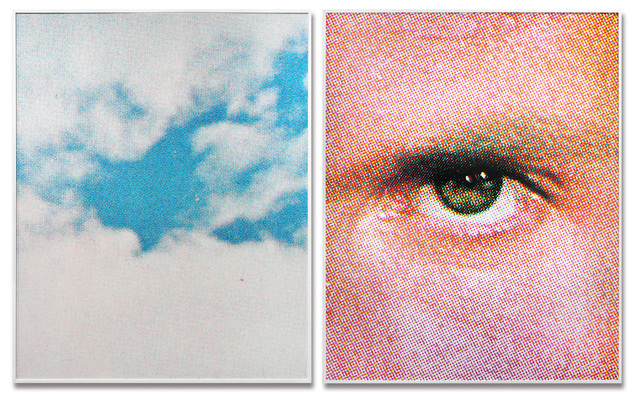Focus on Gallerists: Ashlyn Davis Burns & Shane Lavalette of Assembly
To round out our week of interviews with gallerists, we turn to two figures—Ashlyn Davis Burns and Shane Lavalette—who are spearheading a different kind of venture. The duo’s months-old initiative, Assembly, utilizes elements of traditional, commercial galleries while simultaneously rethinking and expanding other parts of this institutional model. The result is a nimble, flexible organization that advocates for artists and connects them with the many—but often difficult to navigate—opportunities housed across a variety of art world structures, from museums to collectors to publishers.
Assembly represents a diverse roster of artists working in photography, mixed-media, video, and sound. As a gallery, agency, and creative studio, Assembly holistically nurtures artists and their practice, while identifying and cultivating opportunities for collaborations with a global network of creatives, in both the fine art and commercial worlds. Assembly offers value-driven consulting for collectors, museums, and institutions, creative production and art buying services for magazines and brands, and creates meaningful projects that tell memorable stories about the world we live in.
Erica Cheung: How and why did Assembly come to be?
Ashlyn Davis Burns & Shane Lavalette: When we first talked about Assembly, we were discussing new models and ideas for what a space or platform that supports artists could look like. We tossed out a lot of the expectations we might have for a traditional gallery or agency and developed the concept around the needs of artists. We founded Assembly amidst the pandemic as well, launching just a few months ago in March 2021, so a virtual approach was not only logical but lent itself to our interest in efforts beyond brick-and-mortar. By operating with a hybrid model, our goal was to develop an approach to working with artists that can holistically support their practices in both the fine art and commercial realms. We have each worked in the non-profit field for about a decade previously, supporting artists through exhibitions, residencies, and publications, so we were really bringing all of this experience and an artist-centric approach to the vision for Assembly.
EC: In the bio, Assembly is defined in a multifaceted way as a “gallery, agency, and creative studio.” How do these various components operate on behalf of the artists that you work with?
ADB & SL: We recognize that an artist’s practice is in and of itself multifaceted, so by creating a platform that can support a variety of projects, efforts, ideas, and opportunities, we believe we’re positioned to be the most responsive to artists and their expansive needs. We talked a lot about what it means to live a creative life, and we spoke with many artists about their candid experiences working with galleries and agencies—the good, the bad, and the ugly—and used this feedback to develop a path forward that could potentially foster positive changes in the industry.
EC: This past week on Lenscratch, I have had the privilege of connecting with a wonderful slate of commercial gallerists across the country. I wanted to end the week with the two of you because while you have a foot in the commercial world, you are also expanding our understanding of what galleries—and arts organizations in general—can do for artists. In what ways does Assembly function similarly to a traditional brick-and-mortar gallery? In what ways does Assembly diverge from convention—and why?
ADB & SL: Like a traditional gallery, Assembly is interested in placing works with individual and institutional collections. However, as a virtual space, rather than focusing on exhibitions in a single location, we are interested in creating exhibition and programming opportunities at numerous locations around the country and hopefully globally as well, whether through collaborations with other galleries and non-profits or through unique pop-up opportunities in various locales.
In addition to the traditional dealer relationship, we also act as a commercial agent for our artists on editorial and commercial projects with publications and brands, by negotiating contracts or pitching story or campaign ideas. This dual component is particularly interesting to artists working in photography as it allows numerous opportunities to now only sustain their creative practice, but also to extend their fine art practice in unique ways with a broader audience.
Finally, Assembly also supports the marketing, sponsorship and funding component for our artists by supporting grant and residency applications, seeking out unique sponsorships for project-based support, and promoting their work with a broad array of constituents. While many brick-and-mortar spaces do some of this, from our experience, there are few who bring these components together in a more active way. We sought to fill this gap as well as to drill down a bit deeper into what it really means as a dealer or agent to support our artists’ practices, rather than just the end product that hangs on the wall.
EC: What do you find most compelling about the works of artists on your roster?
ADB & SL: We are drawn to artists that have a unique vision and voice and are using it to make important and innovative work that engages with personal, social, and cultural issues. We’re absolutely motivated by the work itself, of course, but are very interested in the artists behind the work. We feel the most urgent, resonant, and vital art is often the most true reflection of the perspective and experience of the artist making it. Many of our artists also maintain a rich research-based practice, and are engaged in long term projects, and all are really pushing the boundaries of what we think of as lens-based media.
Currently, we are working with artists David Alekhuogie (Los Angeles, CA), Poulomi Basu (Kolkata, India / London, U.K.), Alejandro Cartagena (Monterrey, Mexico), Alinka Echeverría (Mexico / London, U.K.), Alanna Fields (New York, NY), Fumi Ishino (Los Angeles, CA), Sarker Protick (Dhaka, Bangladesh), Pacifico Silano (New York, NY), Rodrigo Valenzuela (Los Angeles, CA), Cristina Velásquez (Bogotá, Colombia / New York, NY), and Vasantha Yogananthan (Marseille, France).
Our roster is intentionally global, with representation in the US, Latin America, Europe, and South Asia. We are thinking globally and interested in diverse perspectives, so building a global network and community is essential in our eyes. As a gallery, we’re interested in presenting work that we believe is worthy of supporting, collecting, exhibiting, not only because of the strength of the work itself but the ideas and conversations that surround it—now and in the future.
There are too many ongoing artist projects in the works to mention them all here, of course, but to share a few examples of how we’re working to introduce important work by a few of the artists to new audiences…
Following our launch, we published the first limited-edition artist book by LA-based artist Fumi Ishino, Index of Fillers. Composed of found images of Japanese culture from the late 1980s and 1990s along with Ishino’s own photographs, Index of Fillers is a recreation of the artist’s elusive memory of growing up during this era in Japan. Fumi’s work is intelligent and humorous, and this book is no exception. We are currently working on a presentation of a new body of work by Fumi called Tinted Lines, which is a departure for him and extends his photographic practice into more sculptural/dimensional pieces that we are excited to be showcasing later this Summer.
For part of June and July we are working with Alinka Echeverría to celebrate 10 years of her acclaimed series The Road to Tepeyac by launching a campaign that will support a women-led Mexican non-profit organization, Fondo Semillas. The Road to Tepeyac consists of a series of photographs of devout Mexican pilgrims carrying their personal image of the Virgin of Guadalupe on the anniversary of her apparition in 1531. We see this as a wonderful opportunity to bring attention to this amazing work, as well as an important cause that’s close to Alinka’s heart.
Looking ahead to the Fall, we plan to present a survey of French artist Vasantha Yogananthan’s A Myth of Two Souls, a seven chapter project based on The Ramayana, one of the two major Sanskrit epics of ancient India. The project’s chapters have previously been published as books, so to commemorate the completion of the final chapter, the publisher Chose Commune will be releasing a box set of books and prints that includes past books that have long been sold out. The special edition set will be available exclusively in the US through Assembly.
EC: What are your expectations of the artists that you collaborate with? Reciprocally, what might the artists you represent expect of you?
ADB & SL: This depends entirely on the needs of each artist and we are as hands-on as is helpful to them. Some artists are in production mode for the coming year, for example, and need very little as they make space for new work and projects. Some artists are interested in conversations and feedback on work as it’s in development. Other artists have desires to create more context around a particular body of work that already exists, through articles, museum shows, or books. We’re working with a few of the artists on publication projects, wherein we develop connections with publishers that will be an ideal fit. Sometimes artists just need more casual support, advice, or guidance, so we make ourselves available for all of this, and anything in between. Not only is there a lot of overhead for a traditional gallery operation but so much bandwidth goes into things that we do not do, which really frees up our energy and time for working more closely with artists more regularly. This is something that is not entirely unique to us, of course, but we feel is an important part of our mission.
There are multiple possible metrics of ‘success’ for arts organizations—i.e. number of attendees at events, diversity in works shown, grants awarded, dollars earned, etc. These metrics, of course, are prioritized differently depending on the type of organization and its leaders. When do you feel most successful in the work that you are doing (whatever your definition and valuation of ‘success’ may be)?
ADB & SL: One of our artists has worked with various galleries over the years and after a recent meeting to discuss some of their short and long term goals and ideas, and to get a sense of how we can be the most supportive along the way, they said “None of my galleries have ever had this conversation with me.” For this artist, having a deep and open conversation wherein we discuss ways to work together beyond simply showing work was impactful and exciting. By establishing a close and open relationship with each of our artists, we believe that we can truly work together, and for us that’s the definition of success—creating an inclusive and collaborative space that supports one another.
EC: How have your previous experiences in the non-profit world—Ashlyn with Houston Center for Photography, Shane with Light Work—informed your thinking about this venture?
ADB & SL: We absolutely feel that we’re carrying our past experiences forward. We recognize the good work that organizations can do to support artists as well as the pitfalls of institutions, and with Assembly we wanted to create something that was very fluid, with room to evolve, develop, expand, adapt, and modify, in ways that sometimes institutions can struggle with. We don’t just want to position ourselves in the present, but be constantly thinking ahead about the future and how we can adapt to the new opportunities presented by this ever-evolving medium and landscape. As a two-person team, we can make decisions very quickly and be very responsive to the issues and ideas important to the world today.
Our prior experiences have also emphasized the importance of community-building and Assembly very much aims to carry this forward, not only creating community among our roster of artists, but also with our various online and in-person audiences.
EC: What do you hope Assembly will look like in the coming years, and what can we do to support you in your mission?
ADB & SL: The most exciting part of all of this is that we really do not know. It’s tough to predict where things will be in six months, let alone the coming years. In these early days, we are thrilled to connect with anyone who is interested in what we are up to—be that artists, collectors, curators, writers, publishers, philanthropists, or simply art-lovers. Our plan for the coming year is to grow our network and through conversations explore ideas for meaningful partnerships and collaborations, so if there is potential synergy with what we are doing we’d absolutely love to hear from readers here. Visiting our website and signing up for the newsletter is a great way to keep up with announcements and forthcoming projects, in addition to following Assembly on Instagram.
Posts on Lenscratch may not be reproduced without the permission of the Lenscratch staff and the photographer.
Recommended
-
Interview with Kate Greene: Photographing What Is UnseenFebruary 20th, 2024
-
Semana Mexicana: Felipe “Chito” TenorioFebruary 5th, 2024
-
Amy Lovera in Conversation with Douglas BreaultJanuary 23rd, 2024
-
Michelle Bui: Affinités poreusesDecember 27th, 2023



















































































